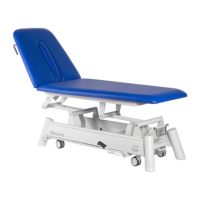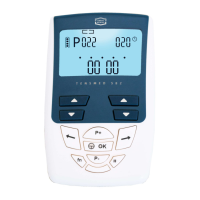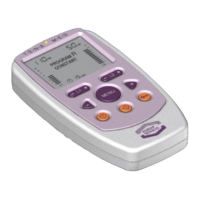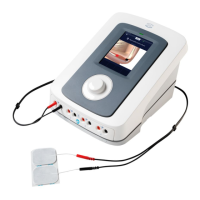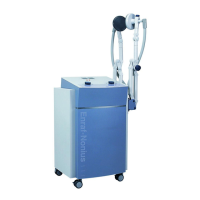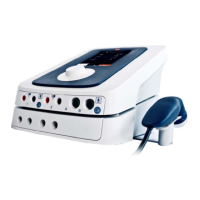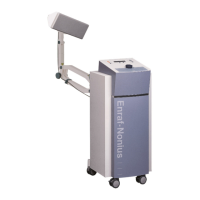Page 63 of 72 EN109-1498751-47 IFU
14 Maintenance and troubleshooting
Cleaning and disinfection
Before performing any user maintenance, switch off the device and disconnect the plug from
the mains supply.
Do not spray the cleaning agent directly on the glass panel.
Do not use cleaning agents that contain strong alkalis, lye, acid, detergents with fluoride or
detergents with ammonia.
Use no liquid detergents, these can damage the device.
Do not allow any liquids to penetrate the device or its accessories while cleaning and
disinfecting!
Dry all sockets and connectors that have become wet before any further use!
Check the applicator and cable regularly for damage.
To clean the unit, turn it off and unplug the power supply. Clean the unit with a
damp cloth. Do not use abrasive cleaners.
The display panel contains an anti-reflective coating, which needs special care
when cleaned. Use a soft and dry cotton cloth or micro fiber tissue to clean the
panel. To remove fingerprints or grease, use a non-abrasive glass cleaning
agent. Apply a small amount of the cleaning agent to a soft cotton cloth and
then carefully clean the panel.
To prevent corrosion, clean and dry the contact surface immediately after use.
Make sure that no ultrasound gel remains on the applicator. We further
recommend cleaning the applicator and cable daily, using lukewarm water. The
applicator can be disinfected using a cloth moistened with a 70% alcohol
solution. Check the applicator and cable regularly for damage.
Electrodes and
accessories
Between patient uses, the rubber electrodes should be cleaned with lukewarm
water. To disinfect the electrodes or to remove stubborn stains of dirt, use a
70% alcohol solution. The alcohol solution can cause the black colour to be
stained, but this does not affect the operation of the electrodes.
Between patient uses, the sponge pads should be washed in running tap
water, thoroughly drained, and then dried. Damaged sponge pads should be
replaced.
Clean the patient cable with a damp cloth. Do not use an alcohol solution.
Check the cable regularly for damages and/or bad electrical contact. We
advise, keeping a spare patient cable in stock.
Vacuum
electrodes and
sponges
The vacuum electrodes and sponges should be cleaned with lukewarm water.
In the case of persistent dirt, and for disinfection, a 70% alcohol solution may
be used.
Sponges should be replaced regularly. It is recommended to keep sponges
and a spare electrode in stock.
Calcium scale can be deposited on the metal surfaces of the electrodes. This
has an insulating effect. In order to maintain optimum conductivity, these
surfaces should be regularly cleaned and polished.
Clean the vacuum cable with a damp cloth. Do not use an alcohol solution.
Check the cable regularly for damages and/or bad electrical contact. We
advise, keeping a spare vacuum cable in stock.
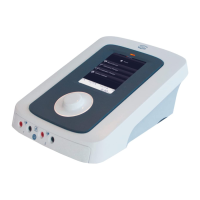
